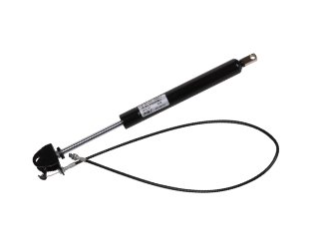News
Site Editor
 Site
https://zhiligasspring.usa72.wondercdn.com/uploads/image/6178b11c16e2d.png
However, in order not to waste user’s time in changing the assemblies and trying different forces while installing the right gas spring for the job, here are some tips on how to install lockable gas springs appropriately.
Site
https://zhiligasspring.usa72.wondercdn.com/uploads/image/6178b11c16e2d.png
However, in order not to waste user’s time in changing the assemblies and trying different forces while installing the right gas spring for the job, here are some tips on how to install lockable gas springs appropriately.
Tips for Proper Installation of Lockable Gas Springs
Views: 961
Author: Site Editor
Publish Time: 2022-05-17
Origin: Site
Lockable gas springs are self-contained, force generating, and maintenance-free cylinders. Their body is pre-charged with nitrogen gas to give a distinctive output force.
The pressure applied to the piston and diameter area provides the output force. Lockable gas springs are used to move and position table-tops, lids, chairs, and host of other assemblies.
A standard lockable gas springs are somewhat economical. They are fast and can be ordered at ease.
However, in order not to waste user’s time in changing the assemblies and trying different forces while installing the right gas spring for the job, here are some tips on how to install lockable gas springs appropriately.
Tips for proper installation of Lockable Gas Springs
-
Mounting Instructions & Orientation
-
While installing lockable gas spring, mount the gas spring with piston pointing down in an inactive state to ensure proper damping.
-
Do not allow gas springs to be loaded as this can make piston rod to bend or cause early wear.
-
Tight all mounting nuts / screws correctly.
-
Lockable gas springs are maintenance free, do not paint piston rod and must be kept safe from dirt, scratches and dent. As this can impair the sealing system.
-
It is recommended to apply additional locking mechanism in a case whereby failure in the lockable gas spring fitting application is resulting into risk of life or health!
-
Do not increase or retract lockable gas springs beyond their design specifications.
-
Functional Safety
-
The gas pressure must always be kept inside by the seals and the smooth piston rod surface to ensure functional safety of the lockable gas spring.
-
Do not place the gas spring under bending pressures.
-
Damaged or improperly altered products of lockable gas spring should not be installed either by after-sales or mechanical process.
-
Never should you modify or manipulate impacts, tensile stress, heating, painting, and removal of any imprint.

The optimal temperature range designed for an ideal lockable gas springs is -20°C to +80°C. Obviously, there are also lockable gas springs for greater applications.
Lockable gas springs are maintenance-free! They do not need further greasing or lubrication.
They are designed to work for their corresponding applications without any shortcomings for many years.
-
Transportation and Storage
-
Always actuate the lockable gas spring after 6 months of storage.
-
Do not transport lockable gas springs as bulk material to prevent damage.
-
Do anything possible to avoid the lockable gas spring from being contaminated by thin packaging film or adhesive tape.
-
Caution
Do not heat, expose, or put the lockable gas spring in open fire! This may lead to injuries because of high pressure.
To recycle the metals of unused lockable gas spring firstly depressurized the gas spring. Lockable gas spring should be disposed of in an environmentally good manner when they are no longer needed.
For this purpose they should be drilled, release the compressed nitrogen gas and the oil should be drained.
Partner with us for your standard Lockable Gas Springs.
Proper installation of lockable gas springs will help to prevent accidents, product damages, malfunctions, etc.
Kindly contact us for more information or to place your order. And we’ll be glad to partner with you!
